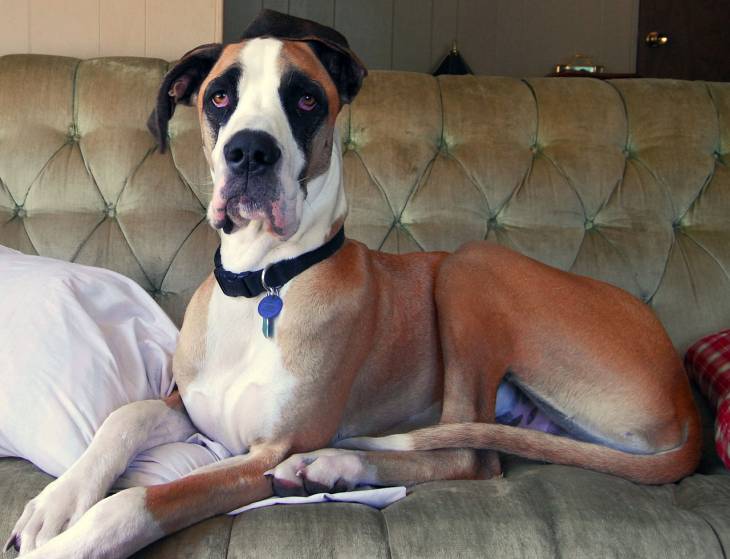The Great Dane (Basic Facts Behind the Big, Lovable Breed)
Scooby-Doo is a Great Dane. That alone is enough to cement this massive breed’s status as a titan in the canine kingdom. Yet there is more to this breed other than its association with a famous cartoon character. It’s a breed whose lineage is filled with intrigue, legend, and mystery.
Great Danes at a Glance
The modern Great Dane has a well-honed reputation for being one of the most lovable, affectionate breeds around. This so-called “Apollo of Dogs” is well-known for its large frame, long strides, dense coat, and overall elegance in the way it carries itself. It is equally known for its unbridled enthusiasm and friendliness, which may make the breed a little more difficult for smaller-sized humans to own.
The Evolution of the Great Dane
It may be hard to imagine that the original Great Danes were aggressive beasts with fierce temperaments. But the breed was initially bred to hunt wild boar. As the need for hunting lessened, the aggressiveness was essentially bred out of the bloodline, thus leading to one of the most docile dogs that fill many a happy home.
While the Great Dane has only been recognized as a distinct breed for around 400 years, its roots trace back much further. It is thought that the dog’s ancestors go as far back as 3,000 B.C., where drawings showing dogs that resemble Great Danes appeared on various monuments. Great Dane-like dogs can also be found in the ancient literature and art of countries like China, Greece, and Tibet.
Despite the name, the modern Great Dane does not hail from Denmark. The Germans were the ones that bred the distinct version of the breed. The only reason its associated with the Danish is because it was allegedly bestowed its moniker by a French naturalist that happen to come across the breed on a trip to Denmark.
You can also argue that making Scooby Doo a Great Dane wasn’t happenstance. The big beasts were once thought to have the ability to ward off ghosts and evil spirits. It’s never been officially established that this was the reason Scooby was a Great Dane, but it certainly fits the narrative rather well.
What You Should Know Before You Welcome a Great Dane into your Home

The most important metric about a Great Dane is that its size lives up to its name. They can grow quite rapidly, and it is critical that their nutrition and exercise needs are carefully observed during this time frame. It is also vital that training takes place before the dog gets fully grown if possible, as an untrained Great Dane could cause a lot of unwitting commotion - particularly if the owner doesn’t have the strength or size to handle the dog’s spirited enthusiasm.
Despite its massive size, sturdy frame, and prior history as a hunter, Great Danes are not outdoor dogs. While he can spend time playing and exercising outside, sufficient room in your home must be made for him for hanging out and sleeping. It is inadvisable to bring a Great Dane into your home if you cannot provide him with proper space.
You should also be aware that the lifespan of a Great Dane tends to be on the shorter side, and they're not without health problems. On average, these magnificent beasts have an average lifespan of 7 to 10 years. Ailments that Great Danes may be particularly susceptible to include: hypothyroidism, canine hip dysplasia, cardiomyopathy, and gastric torsion.
The Joys of a Well-Trained Great Dane
You would be hard-pressed to find a more amiable, sweet dog than a properly trained Great Dane. These well-mannered beasts are extremely loyal family dogs, very friendly toward other household pets, and very gentle around people of all ages. They also don't bark unless they absolutely have to bark.
If you have the time to train and the proper amount of space, welcoming a Great Dane into your home can be a wonderfully warm thing. Your big buddy will give you and your family all kinds of reasons to fall in love with him and his sweet nature. What’s more, your friend will come up with all sorts of endearing ways to show how much he will unconditionally love you right back.

